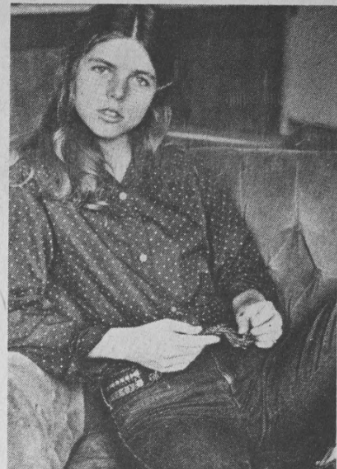This summer, Owusua (my fellow intern in Archives and Special Collections) and I worked together to curate an exhibit we’re currently installing in Archives’ public space on the A-Level of Frost Library which commemorates the upcoming 50th anniversary of Amherst College’s decision to admit women as undergraduate degree candidates. My research for this project largely focused on the so-called “pre-coed” years, from the initial debates surrounding coeducation in 1870 and 1871 (no, that’s not a typo!) through the Board of Trustees’ vote to go coed in November 1974. While flipping through years worth of archived editions of the Amherst Student, the College’s student-run newspaper, I came across two images that were repeatedly used to illustrate the concept of coeducation in articles representing a variety of perspectives.


These pictures appear in the Student several times over the course of at least four academic years, starting in 1971, often used to illustrate the concept of coeducation or, more broadly, the nature of relationships between men and women [1] at the College; the latter image was at times accompanied by captions such as “symbol of coed” or simply “the coed girl.” Women who participated in the social life at Amherst leading up to and during this period were largely students at Smith and Mount Holyoke Colleges; they were also able to take classes at Amherst through the Four/Five College course exchange program. Beginning in the Fall of 1969, a small number of women also lived on-campus at Amherst as residential students for a semester or an academic year through the newly-formed Ten-College Interchange (now the 12-College Exchange).
These two photographs represent a dichotomy pervasive to Amherst student culture in the early ’70s: even as the majority of students supported coeducation, [2] women on campus were primarily either seen as sexually available to men or unceremoniously de-sexed. Women exchange students were well aware of this dynamic; for example, one Student article written in 1971 cites an unnamed woman exchange student as stating, “We are treated usually in one of two ways: as one of the boys, or as sex objects.” [3] Nearly three years later–while Amherst was still accepting women as semester- or year-long exchange students but not as degree candidates–a student on exchange from Vassar wrote the following about her experience as a “coed” (woman exchange student) at Amherst: “… we often face the problem of being stuck somewhere between a sex object and ‘one of the guys.’ … The coeds are not part of Amherst, nor are the girls who hop on the bus, take a class here, and then go back to Smith or Holyoke.” [4]
The disconnect from the male-dominated campus community that many women on exchange at Amherst experienced was important for me to keep in mind as I worked on this exhibit and tried to compose a picture of Amherst in flux. As I dove deeper into the roles that women students played in on-campus activism at Amherst prior to full coeducation, I developed a better understanding of Amherst as it was pre-1976 (when the first women transfer students graduated and the first coeducational class of first-years matriculated); the expressed reality of women students as physically present but not “part of” the College contextualizes the activist roles many of them chose to take up and provides context to the environment that their successors–the cohorts of women transfer students and first-years who entered Amherst in the mid- to late-’70s–would encounter.
Footnotes:
[1] Discussions of gender at this time largely operated within a binary framework.
[2] Rosenthal, E.S. and F.S. Gordon. “Students Favor Coed, 3-to-1; Majority Supports Ward Plan.” Amherst Student, November 6, 1972, p. 1.
[3] Gerchick, Mark L. “Valley Coeducation: Little Unanimity of Opinion.” Amherst Student, October 23, 1971, p. 7.
[4] Greenspan, Emily. “Amherst From ‘Within’: A Coed View.” Amherst Student, April 22, 1974, p. 3.

You must be logged in to post a comment.